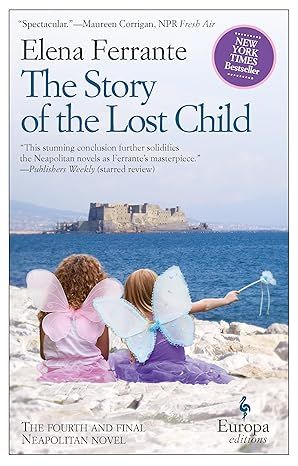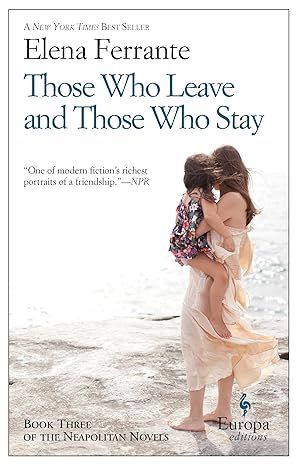The Story of a New Name: A Novel (Neapolitan Novels, 2)
4.5 out of 5
17,407 global ratings
A novel in the bestselling quartet about two very different women and their complex friendship: “Everyone should read anything with Ferrante’s name on it” (The Boston Globe).
The follow-up to My Brilliant Friend, The Story of a New Name continues the epic New York Times–bestselling literary quartet that has inspired an HBO series, and returns us to the world of Lila and Elena, who grew up together in post-WWII Naples, Italy.
In The Story of a New Name, Lila has recently married and made her entrée into the family business; Elena, meanwhile, continues her studies and her exploration of the world beyond the neighborhood that she so often finds stifling. Marriage appears to have imprisoned Lila, and the pressure to excel is at times too much for Elena. Yet the two young women share a complex and evolving bond that is central to their emotional lives and a source of strength in the face of life’s challenges. In these Neapolitan Novels, Elena Ferrante, “one of the great novelists of our time” (The New York Times), gives us a poignant and universal story about friendship and belonging, a meditation on love and jealousy, freedom and commitment—at once a masterfully plotted page-turner and an intense, generous-hearted family saga.
“Imagine if Jane Austen got angry and you’ll have some idea of how explosive these works are.”—The Australian
“Brilliant . . . captivating and insightful . . . the richness of her storytelling is likely to please fans of Sara Gruen and Silvia Avallone.”—Booklist (starred review)
471 pages,
Kindle
Audiobook
Hardcover
Paperback
Audio CD
First published September 2, 2013
ISBN 9781609451349
About the authors
Elena Ferrante
Elena Ferrante is the author of seven novels, including four New York Times bestsellers; The Beach at Night, an illustrated book for children; and, Frantumaglia, a collection of letters, literary essays, and interviews. Her fiction has been translated into over forty languages and been shortlisted for the MAN Booker International Prize. In 2016 she was named one of TIME’s most influential people of the year and the New York Times has described her as “one of the great novelists of our time.” Ferrante was born in Naples.
Read more
Reviews
Brian S.
5
Wonderful read
Reviewed in the United States on April 17, 2024
Verified Purchase
The Story of a New Name was a delightful book. It was very well written and extremely readable. I had already read My Brilliant Friend, which was also an excellent book. The Story of a New Name was even better.
Peter Anastas
5
There is a knowingness in this novel
Reviewed in the United States on August 16, 2014
Verified Purchase
Here is a taste of Ferrante's "The Story of a New Name": Lena, the narrator, has finally broken away from Naples to become a university student in Pisa. She is reflecting on her relationship with Lila, her closest friend, the one who married at 16 and is now carrying on an affair with Nino, a radical university student, whom Lena first loved:
"Yes, it's Lila who makes writing difficult. My life forces me to imagine what hers would have been if what happened to me had happened to her, what use she would have made of my luck. And her life continuously appears in mine, in the words that I've uttered, in which there's often an echo of hers, in a particular gesture that is an adaptation of a gesture of hers, in my less which is such because of her more, in my more which is the yielding to the force of her less. Not to mention what she never said but let me guess, what I didn't know and read later in her notebooks. Thus the story of the facts has to reckon with filters, deferments, partial truths, half lies: from it comes an arduous measurement of time passed that is based completely on the unreliable measuring device of words."
What's so fascinating to me about this novel is that we are dealing with two brilliant working class women, one of whom, LIla, drops out of high school to marry a man who turns out to be both violent and a criminal, while Lena, breaks away from Lila, their families and their neighborhood against all odds to attend university, going on to a life of academic success and writing. It is Lena who narrates the novel. It is her language, her voice. both objective and intellectually searching, while still deeply immersed in the native dialect, that we hear in the novel.
There is a knowingness in this novel, an inescapable maturity, which you often only find in European fiction. Behind Ferrante there is Moravia, Morante, La Capria, the great Modernist novelist of Naples, and possibly even Pratolini, who wrote so surely about working class life in Florence. But Ferrante is also herself. She writes about women as no Italian novelist since perhaps Grazia Deledda, who won the Nobel Prize in 1926, has written about them. Her psychological acuteness is breathtaking. The third and final volume of the trilogy "Those Who Leave and Those Who Stay," will be released in early September. I can't wait to read it.
Read more
4 people found this helpful
PlantBirdWoman
5
The Story of a New Name by Elena Ferrante: A review
Reviewed in the United States on February 16, 2016
Verified Purchase
The Story of a New Name is the second in Elena Ferrante's highly-praised Neapolitan Quartet. In it, we again meet the two friends. Lila and Elena, both born in August 1944 and now in their late teens and early twenties.
By the end of the first book, My Brilliant Friend, teenaged Lila was already married to the wealthy grocer Stefano. Their marriage had continued the neighborhood pattern of rape and beatings. The "brilliant" Lila, who, like Elena, had longed for a different kind of life away from the impoverished neighborhood where they grew up, had escaped the poverty of her childhood in her marriage to Stefano, but she couldn't escape the culture of male domination and physical abuse. That was simply the accepted way of the world.
It was inevitable that the spirited Lila would eventually rebel and seek more from life. The only surprising thing about that was where and from whom she sought that "more."
Elena, meanwhile, with the help and encouragement of her teachers and her own hard work, as well as a little bit of luck, continued her progress through the educational system. She escaped the trap of an early marriage and managed to continue to college, which opened up a whole new world to her.
The story of Elena's first trip away from her neighborhood to go to the college at Pisa brought back some vivid memories for me. I could relate very well to the apprehension and anxiety of a girl who had lived all her life in an insular neighborhood as she struggled to find her way and her place in this new world she had entered. Been there. Done that. Got the tee shirt.
This really is, in so many ways, a heartbreaking story. The barriers that life throws up for these two young women must seem almost unreal to younger women readers living in Western societies today, but their older mothers, aunts, grandmothers can testify that the barriers really did exist and, in all too many instances, still do, even if in modified form.
Elena continues to be the narrator of this story, but her narration is informed by some notebooks of Lila's. Lila had given them to her and pressed her to keep them - but not read them - so that Stefano would not find them. They were notebooks containing her writing about her feelings and experiences from the time of childhood right up through her marriage. Of course, Elena could not resist the temptation of reading them, and so she is able to tell us what Lila was feeling concerning many of the events of both their lives.
The two young women had always been competitive, especially about school, but, as they reach adulthood, they also become competitive about men. They are attracted to the same young man, although Elena denies her attraction. This attraction will have important consequences for their friendship and for their lives.
Throughout these years, the friendship undergoes repeated trials. The lives of the two have diverged in very significant ways and, at times, they are emotionally distant as well as physically distant from each other. But always something brings them back together.
I loved this book. I thought it was even better than My Brilliant Friend. From the very first page of The Story of a New Name I was mesmerized. I would have liked to read the entire book in one sitting, but, unfortunately, life intervened. I had work to do, places to go, appointments to keep, but I always returned to it as soon as I could, because I just couldn't wait to find out what was going to happen next.
My only real problem with the book was one of the same ones I had with the first entry, namely trying to keep the cast of thousands straight! All those confusing names and all those families and their interrelationships. Had the author not again included that index of characters at the beginning as a handy reference, I might have been irretrievably lost.
As it is, I now feel that I know and understand Lila and Elena. The drama of their lives seems so real, so well-written, and so engrossing that one can't help feeling that it must be based upon real life. The author herself is something of a mystery, but she grew up in Naples and it seems likely that she experienced or observed events similar to the ones that she describes in her books.
Or maybe she just has a really vivid imagination.
Read more
17 people found this helpful
N/A
5
You can't eat just one, or two...
Reviewed in the United States on October 7, 2016
Verified Purchase
I've just downloaded Book 3 as I write this.
Ferrante, as if part Forensic Pathologist, part Historian, is able to dissect every thought, every feeling, every nuance, and every breath that both Lila and Elena experience throughout their daily lives.
These books will make many uncomfortable as they can be dark, depressing and violent at times and are not “friendly” books or very uplifting (at least through Book 2). In fact, it’s difficult to find any spark of happiness between the pages of the first two books. If they are there, they are quickly diffused.
Ferrante’s raw look into the lives of two very different women is astonishing and exposed. One, Elena, who seems to only live through the other, insecure and driven by the other, and Lila, who is too smart for her time, too independent and confident. One who obeys, one who does not. One who is studious and rigid, disciplined and focused, and one who is creative, manipulative at times, and meanders through life with the weight of her poverty and the mistakes she has made bearing down on her. Both touching on brilliance, or at the very least, the capacity to be successful. Choices.
It is a slice of the lives and friendship of two women close-up and personal, but universal in reach.
I empathize with the sadness and frustration that some other reviewers have stated, and perhaps it is that sadness and frustration that compels one to read the next – to find that silver lining in life. The hope that love and friendship will overcome, no matter how hard a path is set before you.
Read more
3 people found this helpful
Jaybee
5
Down Dog in Napoli
Reviewed in the United States on August 16, 2015
Verified Purchase
I've just finished this second book in the trilogy. What a wonderful read. Ferrante has captured the raw emotions of a Naples neighborhood populated by working class people fighting for money, love, respect, and most often fighting with each other. Their lives are circumscribed by tradition and more doors close on these Neapolitans than open for them. Opportunity is rare and of the two brilliant friends, only one will succeed in getting a higher education. Elena will surpass her best friend Lila by gaining an impressed teacher's mentorship and going to high school and then college. But the bittersweet affection and competition that marks their friendship will continue despite their different life pathways. These dual traits are as recognizable in turbulent Naples or cosmopolitan New York. Today we talk about toxic friendships. But this female bond unit is loyal, hurtful, and as competitive as the Williams sisters on a tennis court. Lila defines herself by co-opting the knowledge accrued by her friends and eventually her husband, whom she married for money and status by the age of sixteen. Many suitors' hearts break when this marriage occurs, but the bride's heart turns stone cold when she sees an avowed enemy wearing shoes she made years ago to the wedding reception. These were shoes bought by her fiancé and destined to be saved. Lila will never forgive this betrayal and takes revenge on her new husband by withholding her love. Their wedding night becomes an assault and the physical violence she suffers becomes a way of life. While Lila lives a life of drama and danger, Elena moves toward intellectual fulfillment in Pisa and romance tinged by respect. The second book ends with Lila out of the marriage and Naples, but enslaved in a degrading job in a sausage factory. She has hit bottom while her childhood friend and alter ego Elena continues to soar.
Read more
Spindrift
5
Simply Brilliant....
Reviewed in the United States on June 28, 2016
Verified Purchase
I am so happy that I have had this wonderful series by Elena Ferrante recommended to me. I just finished "The Story of a New Name" after reading "My Brilliant Friend" and am feeling that wonderful euphoria that only a real lover of literature feels when there are two more books to look forward to that will continue my enchanting experience with these expertly drawn characters. I have hit a bit of a dry spell lately in my reading and feel like I have discovered a spectacular secluded beach with a sparkling azure sea surrounded by a forest of Redwood trees among a tired old smelly city full of toxic odors and blighted buildings. These books have added an exponential lovely aura to my early summer days and the fact that I have two to still read is just such a comforting feeling. In these times when there seems to be nothing new under the literary sun I am so pleased that I have found Elena Ferrante. The characters in this story are so expertly drawn that they stay with me all day long after I have closed the book for a few hours. This is really something of a soap opera drawn against the backdrop of post WW2 Naples, Italy. "The neighborhood" with all of it's many inhabitants become a character all to it's self. The class struggle among the political and social turbulence wrap themselves around these young girls who have a friendship that is the heart of the story. Poverty, class differences, and blight come alive to carry the love lives and personal crisis' along on the putrid smelling wind of the landscape.
The story begins in 1950's Naples....but it could really be in any time and in any place. The foundation of the narrative is how omnipotent class, money, and social standing are in who we will all eventually become. I grew up in a tired little industrial town in Southern California in the same time period. The situation was identical. Young people, girls especially it seems, are totally at the mercy of the families that they are born into. Poverty is bone crushing. When education is not important to parents their children suffer horribly. Yet, if they have not been exposed to rising above poor and oppressive circumstances themselves, they are predestined to raise their children in the same depressing mode. Violence is the foundation of many of these homes. Large families stuffed into tiny and squalid dwellings filled with cigarette smoke, cheap food, alcoholism, violence, and always pervasive misery. How to escape? Young girls literally radiate towards men who are violent because that is all they know. This is the crux of Ferrante's brilliant narrative. Her protagonists Lila and Lennucia choose different paths....mainly because of Linnucia's father's willingness to pay the small fee for her to continue into middle school while Lila's shoemaker father didn't believe in educating his girl child. Lila is beautiful and a man magnet....this is her "way out". So the tale is a universal one. It happens every day and everywhere. This is such a fascinating fact of life and Elena Ferrante weaves her narrative with so much honesty and brutal reality that the reader is spellbound with the facts of what is nothing more than the universal truth of life. All over the world it is the same.
Give yourself the gift of the Neapolitan Series this summer. It is actually very relevant to the current presidential race in the USA and the current brexit situation. Globalism and classism and how they affect young lives are the themes of these wonderful books. Since the best seller list is looking rather bleak this summer...I cannot recommend this reading experience more enthusiastically. This is a GIFT....don't miss it.
Read more
9 people found this helpful
Gabby M
4
Beautiful Character Development But What Friendship?
Reviewed in the United States on June 5, 2024
Verified Purchase
I liked well enough but did not understand the fuss about the first of the Neopolitan novels, My Brilliant Friend. I’d heard that the second one was better, and while that’s true, it still wasn’t like, good-good. Picking up right after the end of the first, this book continues to trace the stories of Lila and Lenu as they become young women. Lila realizes even before her wedding reception is over that her new husband Stefano has aligned himself with the local organized crime family, the Solaras, who she despises. This, of course, immediately sours her marriage and it devolves quickly into domestic violence. Lenu, on the other hand, starts to neglect school without either the competition with Lila or the desire to impress her longtime crush, Nino, who has graduated. Lila pushes Lenu back on track, and once she begins actually studying again her future, not just high school but university studies, starts to align. But a love affair drives the two friends apart again, and Lenu leaves for school in Pisa as things become more dire for Lila. Once again, I am left to wonder if my issues with the book are related to its translation. The prose is choppy and staccato, the opposite of my own experience of Italian. And there remains the issue of how to elegantly render the difference between Neopolitan and standard Italian, which is significant enough that it can’t go unremarked upon but is always jarring when the text denotes a change. The character development, though, ably builds on the foundation from the previous volume, giving greater shading and complexity to both Lila and Lenu. I enjoyed things more when I stopped looking for this deep and profound friendship I felt like I was promised by reviews of the book and understood that they’re more frenemies than anything else. It was more engaging by enough that I’ll continue the series, but I still remain perplexed at the raptures people go into about these books.
Read more
A. Murphy
4
Such horrible people, so well written
Reviewed in the United States on February 6, 2016
Verified Purchase
I barreled into this book and sailed through the first 200 pages, but then it flagged for me in the middle, picking up again in the last 150 pages - but that may just have been because the end was near!
I was so torn about this book. On the negative side, all of the characters are detestable human beings. All of them are awful in their own way and it just becomes a question of degrees. The people in the "neighbourhood" are not people I would want to spend time with. Maybe day-to-day they are perfectly pleasant, ordinary people, but in the story of their lives as recounted by Lenu they are deficient in character and action. There is violence, selfishness and base motivations - money and sex primarily. No one looks good in this story. And if they do, it's not for long.
Even though Lenu is the narrator, this is Lila's story. Lila may be fragile and broken in ways that no one can truly understand, least of all Lila herself, but she is still a horrible human being. She is a terrible wife, she is an even more terrible friend. She is manipulative and selfish and capricious. If she was my friend I would break up with her. But the friendship is complex and the codependency of the two friends is the meat of the story and there is a lot of juice there to keep you in there with them. They are also still very young and in addition to their major character defects there is a layer of immaturity that can be missed because so much has happened in their lives. They are both completely unaware and totally, starkly aware of all that they don't yet know and perhaps can never know.
On the positive side, Ferrante draws these human failings so well. She draws a community mired in all this awful human weakness that was born in poverty, that cannot seem to extricate itself even as they become more affluent. She writes with recognition and surety of the human condition and it is a wonder to read.
Also on the positive side, I liked very much where Ferrante is taking Elena. She is growing and changing and I liked particularly her observations on how hard it is move into another class. Elena may be educated and have a degree, but she recognizes that she will never belong in the class that she aspires too. Those scenes where she sees clearly and yet still feels the pull of the neighbourhood are poignant. Elena is the least horrible of the characters, but she also has the advantage of being the narrator. I liked that Lila's position is such a stark commentary on the position of women in Italy in the 1960's and that Elena's juxtaposes that and pulls against it as she tries to gain her independence in work, socially and sexually. It mirrors their friendship in a lot of ways.
The book is masterful on so many levels. The themes of poverty and friendship continue to dominate, but are now interwoven with those of social change and social mobility. But, ugh! They are so hard to be around! They are fascinating and complicated and there is so much to chew on, but they are awful and annoying at the same time. The people in this story are a train wreck that you want to turn away from with discomfort because there is nothing you can do for them and it is so embarrassing for them to have you see, but you rubberneck anyway because you want to know if anyone is going to make it out alive.
I will probably return to Elena and Lila for the third book, but I think I need a little break from them. A solid 3.5 stars reaching for 4.
Read more
11 people found this helpful
Worldreader
4
I'm so engaged I don't have the distance to say if they are brilliantly written -- it is not writing that draws attention ...
Reviewed in the United States on December 4, 2015
Verified Purchase
I'm fully engaged in this series, and I'll read them all. This is number 2 of 4. I'm now on number 3. I'm so engaged I don't have the distance to say if they are brilliantly written -- it is not writing that draws attention to itself, which can be a very good thing. But the main reason one doesn't notice the craft is that the characters and the evocation of a place (the poor end of Naples) and an era (50s-60s so far) are wonderful. The two main characters, poor girls who grow up to very different fates, are heart rending, lovable, infuriating, insightful and obtuse, admirable and badly-behaved: like real people. The supporting cast -- the kids from the neighbourhood with limited horizons and prospects, the parents generation that suffered in the War and struggles to get by, the petit (and not so petit) intelligentsia that the narrator encounters as she gradually escapes the neighbourhood's gravity -- are a world of real life. The book has a feminist sensibility -- in what and how it observes -- without being "about" feminism or gender inequality per se. I'd highly recommend the series to any reader.
Read more
Legend of a Cowgirl
3
Will Not Buy the Third Book
Reviewed in the United States on December 24, 2016
Verified Purchase
My friend gave me a copy of the first book. It was quick and interesting reading; however, afterwards I couldn't say I was satisfied with the book.. I actually felt a little disturbed, maybe for staying captivated by the story. I bought book because I was told it was such a good series. I realize that I read the second book because I feel like a voyeur. I must feel like reality television viewers feel.
I don't have a standard to judge the younger characters of Naples during the 50's & 60"s. But it appears that the author keeps the narrator young intentional so her self-conscienceness and doubts contrasts with Lila's intelligence, purpose and confidence.
I don't buy the characters actions or reactions. It's not consistent and the character development is flawed. Elena's reactions are not typical of a teenager, especially when Lila betrayed her with her pursuits.
I would have rather the point of view be through Lila than annoying Elena. Since she is not a believable character it would have been hard to give her an intelligent voice. I guess I was supposed to believe that she wrote awe-inspiring journals which show how deep she is.
I don't know if my voyeurism is strong enough to borrow and read the third book. I could tell from the ending of this book that Elena was going to pursue someone that would keep her tied to Lila. I don't know if I could go through another day of tediousness.
Read more
4 people found this helpful
Top Elena Ferrante titles
Best Sellers
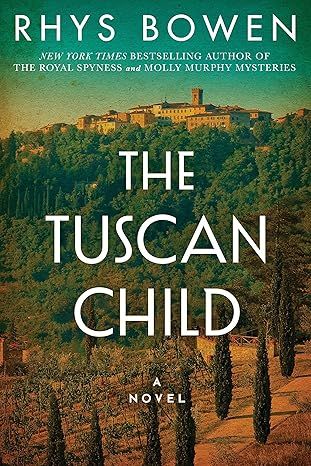
The Tuscan Child
4.2
-
100,022
$8.39
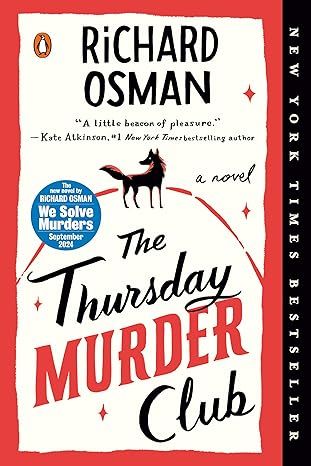
The Thursday Murder Club: A Novel (A Thursday Murder Club Mystery)
4.3
-
155,575
$6.33
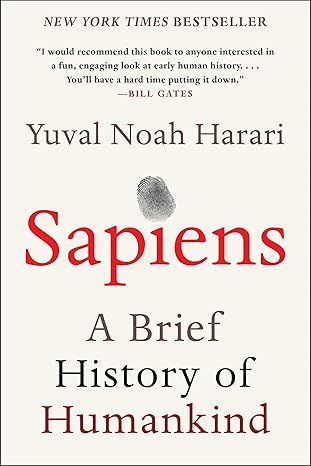
Sapiens: A Brief History of Humankind
4.6
-
140,302
$13.49
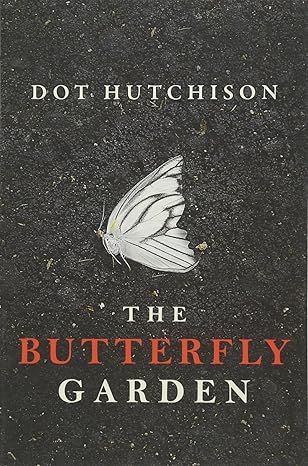
The Butterfly Garden (The Collector, 1)
4.3
-
88,556
$9.59
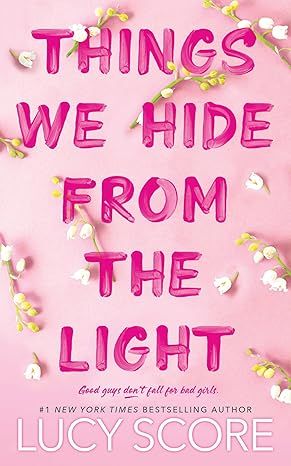
Things We Hide from the Light (Knockemout Series, 2)
4.4
-
94,890
$11.66
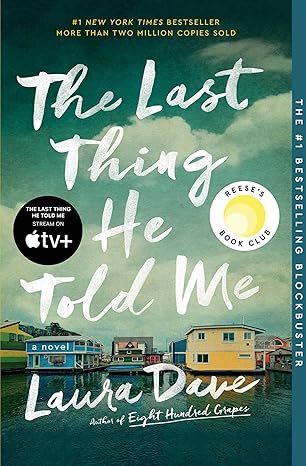
The Last Thing He Told Me: A Novel
4.3
-
154,085
$2.99

The Perfect Marriage: A Completely Gripping Psychological Suspense
4.3
-
143,196
$9.47

The Coworker
4.1
-
80,003
$13.48

First Lie Wins: A Novel (Random House Large Print)
4.3
-
54,062
$14.99

Mile High (Windy City Series Book 1)
4.4
-
59,745
$16.19

Layla
4.2
-
107,613
$8.99

The Locked Door
4.4
-
94,673
$8.53


